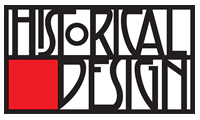Product Description
Laure Albin-Guillot, “Micrographie Decorative” 1931


LAURE ALBIN-GUILLOT (1879-1962) France
Micrographie Decorative 1931
Preface by M. Paul Leon, 20 photogravure plates in a variety of inks and papers, including silver and gold foil, all tipped-in and matted, text in French, limited to 300 numbered copies, folio, spiral-bound bds.
Published by Draeger Freres, Paris.
Micrographie Décorative was created as a tribute to Laure's husband after his death.
Dimensions:
Book: H: 16 ¾” x W: 15” x D: 1 3/8”
Custom leather box 2008: H: 19” x W: 16 5/8” x D: 2 5/8”
Custom silk slipcase: H: 20 1/8” x W: 17 ¼” x D: 4”
Albin-Guillot, Laure (née Meffredi; 1879-1962), French photographer who became interested in photography soon after her marriage in 1897 to the physician/scientist Dr Albin Guillot. At first, her husband's circle of friends, which included architects, writers, and politicians, provided her with portrait subjects. During the 1920s and 1930s she was engaged by the design precepts of the New Vision, and produced more sharply focused close-ups of objects for clients like Bon Marché and Renault. At the same time, she continued to create soft-focus pictorialist nudes that appeared in artistic photography journals and as illustrations in volumes of poetry. Many of her images were exhibited during the 1920s and reproduced in Arts et métiers graphiques. At a time when many photographers were indifferent to the quality of prints intended for reproduction, Albin-Guillot sought to invest hers with artistry and individuality. Engrossed by her husband's lifelong research in micrography, in 1931, in collaboration with Pierre Fresson, she published in his memory a volume of 24 photomicrographs of crystals, exquisitely printed on various coloured and metallic papers. Later, she and Fresson also collaborated on similar works, which were used as decoration on the liner Normandie.
Laure Albin-Guillot, “Micrographie Decorative” 1931
PAUL COLIN (1892-1985) France
“Le Tumulte Noir” portfolio 1929
Color lithographs, limited edition of 500, in original wraps
Published by Éditions d’art, Succès: Paris, 1929
Dimensions:
Book: H: 19 11/16” x W: 13 1/16”
Custom leather box: H: 21” x W: 14 3/8” x D: 1 5/16”
Custom silk slipcase: H: 21 ¼” x W: 14 1/16” x D: 1 11/16”
MARIANNE BRANDT (1893-1983) Germany
METALLWARENFABRIK RUPPELWERK Gotha, Germany
Paper holder c. 1930
Black enameled and nickeled metal, hinged ball weight, ball feet
Marks: RUPPEL (in a circle), mehrfach geschützt
Illustrated: Die Metall Werkstatt am Bauhaus, (Berlin: Bauhaus-Archiv, Museum für Gestaltung, 1992) pp. 181-3;
H: 1 5/8” x W: 5 1/4” x D: 4”
Napkin holder c. 1930
Black enameled metal and nickeled base
Marks: RUPPEL (in a circle), mehrfach geschützt, 85/4440/37, Ruv 5 (numbers in red crayon)
H: 3 ¾” x W: 5” x D: 2 1/8”
For other works by Brandt for Metallwarenfabrik Ruppelwerk see: Die Metall Werkstatt am Bauhaus, (Berlin: Bauhaus-Archiv, Museum für Gestaltung, 1992) pp. 180-183; Die Metall Werkstatt am Bauhaus, (Berlin: Bauhaus-Archiv, Museum für Gestaltung, 1992) pp. 181-3; Avantgarde Design 1880-1930, Torsten Bröhan, Thomas Berg (Cologne: Benedikt Taschen, 1994) p. 105.
F.W. QUIST Esslingen, Germany
Ball ashtray “Smokny”
Nickel plated metal and black lacquered surface
Marks: Quist (on bottom)
H: 3 1/2″
The hardwarefactory F.W.Quist, Esslingen, Germany was founded 1868 as „Lackier- und Metallwaarenfabrik“ from the turner and metal-turner Jacob Schweizer, jun.. In the year 1872, the conversion of the business from a public company occurred, the “Actien-Plaqué Fabrik”. From 1890, the director and shareholders Friedrich Wilhelm Quist took over the business as alone-owner. In his succession four generations continued the business as family-businesses until 1981.
The business always stood for the manufacture more representatively props in the taste of the time. „Tischkultur, Gastlichkeit, Geschenkkultur dienten als Felder, einen gehobenen, verfeinerten Lebensstil zu dokumentieren und das unabhängig von der gesellschaftlichen Zugehörigkeit.“ (Served table-culture, hospitality, gift-culture as fields should document lifestyle, independently of the social affiliation) (Esslingen 2004, S.60)
So, the form of the 1970 as newness presented ball-ashtray was borrowed this famous „ball“ or „globe“ (presented for the first time, 1966 at the international furniture-fair in Cologne) and „bubble“ (1968) chairs by the finish designer Eero Aarnio. The completely new and unconventional shape, Aarnio developed on basis of the simplest geometrical form, the ball. It advanced to a cult-object of the following decade and didn’t lose anything modernity until today.
